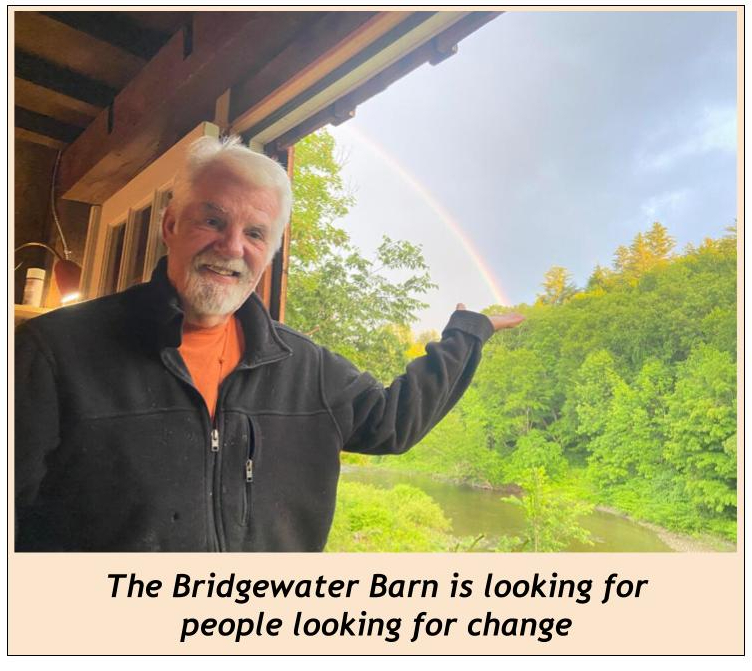Subsidies – and the lack of them – loom large


By Guy Page
Call it a Tale of Two Power Plants.
Both burn wood biomass to make renewable electricity. But one is flush with cash and planning to expand. The other teeters on the brink of failure.
In this era of subsidized renewable power, it is the Best of Times for Burlington’s McNeil wood-fired power plant. (It also burns natural gas.) The plant is a city-owned asset with many friends on the green City Council and in the Legislature. Ratepayers and taxpayers alike provide the funding it needs.
But it is the Worst of Times for the Ryegate Power Station (RPS), located in rural eastern Caledonia County. The RPS is a “merchant” power provider.
Like any other laborer, a merchant power plant must work to eat and eat to work. And lately, fuel to work has been in short supply.
On November 23, RPS shut down because wood chip supplies had slowed. Loggers were tired of late or no payment, Seven Days reports. Plant owner Stored Solar hopes to stockpile enough chips to resume making power by mid-December.
Stored Solar also plans to close most of its biomass power plants (but not Ryegate). The root of the financial woes is lack of sufficient government support in the form of subsidies. In 2018, Gov. Chris Sununu vetoed a bill that would have subsidized NH plants owned by Stored Solar.
RPS does benefit from subsidy legislation in Vermont. But it also has fewer influential friends than McNeil.
The Vermont Legislature in 2021 grudgingly extended the Ryegate’s power subsidy for two years. But Act 39, sponsored by Caledonia County senator Jane Kitchel, however, also requires the plant to develop a plan to use its excess thermal heat. (Past plans to build a shrimp farm nearby and heat it with excess heat never went anywhere.) Somewhat ominously, Act 39 requires the state to draft a contingency plan to cope with the closure of the plant – and send the bill for the study to the state.
Losing RPS would leave the New England grid with one less 24/7 baseload power producer. With the grid already more precarious than ever due to closure of oil, gas and nuclear powered baseload power producers, and a looming natural gas shortage, 20 megawatts could be significant if another Polar Vortex threatens to plunge the region into blackouts, as almost occurred in 2018.
Among renewable power advocates, biomass power is not universally embraced. The front page of the Stored Solar website puts its best foot forward – “Biomass is stored solar energy – In harmony with nature.” The idea is that the sun’s energy is ‘stored’ by photosynthesis into wood, which can be released by burning and thus converted into energy for human use.
In the Vermont State House, the solar power industry is well-represented in both influential lawmakers who work in the industry, and in heavy spending by the renewable power lobby. Alternative forms of renewable and/or carbon-free power (not necessarily the same thing) are often treated more as economic competitors than as allies in reducing global climate emissions. Just ask Vermont Yankee nuclear power plant (closed mostly due to non-support in the Vermont Legislature) and a fledgling Springfield biomass project. Neither got the State of Vermont regulatory support they needed to make electricity.
Solar panel power advocates say ‘their’ generators convert the sun’s rays directly into electricity without the excess heat, not to mention the carbon-intense harvesting, transportation and woodchip conversion of trees. Biomass supporters rejoin that solar panels deliver too little power, and never on demand, also are carbon-intensive to produce, made mostly in China, and do nothing to promote healthy Vermont forests, by far the state’s largest source of CO2 reduction.
The solar panel advocates then shoot back at biomass, saying that burning wood creates plumes of CO2. Indeed the ‘renewable’ and ‘low-carbon’ and financial pros and cons of biomass power and excess heat use are complex. “A lot of our people got wrapped around the axle on that one,” a lobbyist for a Vermont environmental group recently said.
The McNeil plant’s plan for using excess heat is ready for Act 250 review, thanks to $5 million in federal funding secured by Sen. Patrick Leahy.
The ambitious plan is called “District Energy System” or DES. Rather than send plumes of heat and steam into the atmosphere, the Burlington Electric Department would redirect it to heat buildings, especially large buildings owned by UVM, the State of Vermont, and the hospital. It would resemble the Montpelier state complex heated by ‘district heat’ – at a hefty price that a former city official said never would have been built without generous federal financing.
Yesterday, Burlington Mayor Miro Weinberger announced that “with district energy, the McNeil wood chip plant would not only produce renewable electricity but also provide renewable steam to help reduce fossil fuel use and support progress towards our Net Zero Energy goal.”
But, the money.
“It is important to note, however, that there remains substantial work ahead on the financing and pricing for the project before we can reach an ultimate ‘go’ decision,” Weinberger added.
A 2020 report estimates the District Energy System (DES) would cost $16 million, partially funded with the federal grant money.
In the long run, money probably won’t be a problem for the McNeil plant District Energy System. A majority of Burlington ratepayers always seem willing to pay a ‘renewable’ premium. If necessary, the city’s large legislative caucus of Representatives and Senators stand ready to allocate funds to Burlington. It doesn’t hurt that the Speaker of the House and the Senate Pro Tem both hail from Burlington (Rep. Jill Krowinski and Sen. Phil Baruth respectively).
Categories: Energy






Umm… Does the mayor (and the Burlington Caucus) know that the Vermont Climate Council subcommittee on biomass is recommending that the McNeil and Rygate plants be barred from any expansion and eventually shut down?
In the future, how will any of these wood burning plants survive without logging operations. When VT outlaws fossil fuels, where will loggers plug in their electric chainsaws? I guess oxen and draft horses will be brought back as well as hand saws and carts to bring the wood to Burlington and Ryegate. Biomass is the new speak for wood and I would hope that the smoke stacks have scrubbers on them. Carbon is such a problem in Vermont but we must cut the trees to burn for electricity because wind and solar provide a small % of electric generation. We aren’t being led by the best and brightest and most of the voters can’t define what biomass is. We are is dark times and trouble is right around the corner if this ignorance is not corrected.
Guy, I think you missed some of what was said last night, with all of the truth about burning biomass given during the public forum time, and not by “Solar panel power advocates.” Using biomass is not sustainable, not biodiversity friendly, not carbon neutral, not healthy, and not good for anyone. Myriad scientific studies and peer reviewed papers show that this is not the path forward to preserve climate, biodiversity, health. The Biomass Task Group of the Vermont Climate Council has almost finished draft recommendations that do not include continuing with biomass electricity generation as usual, as Robert Roper pointed out. They are also recommending attention be given to biomass burning for heat. Subsidies are starting to be removed from biomass because of how devastating it is in many ways – see Massachusetts, see EU. This is (and should be) on the way out, along with fossil fuels.